Abstract
Among fruit vegetables in Japan, eggplant production is particularly thriving, with the 2022 harvest reaching 295kt, the highest in the country. The cultivated area in the same year was 7.95kha, the largest in the country, indicating that supply is firmly secured to meet demand. It is noteworthy that Kochi is also the largest in terms of shipping volume. This suggests that there are areas where crops are grown differently depending on local characteristics and climatic conditions. Overall, eggplant production is stable, and it appears that a system is in place to meet demand.
Eggplant harvest volume (main data).
Japan’s eggplant harvest peaked at 714kt, the national record, in 1973, and has been on a downward trend ever since. By 2022, it will fall to 41.3% of the overall peak. There are several reasons for this decline, including urbanization, loss of farmland, and a decrease in the agricultural labor force. Changes in agricultural policies and changes in domestic and international demand are also having an impact. On the other hand, there are efforts underway to innovate technologically and improve productivity, and there are also attempts to maintain production levels through these. In the future, the challenges will be to build sustainable agricultural production systems and respond to changes in demand.
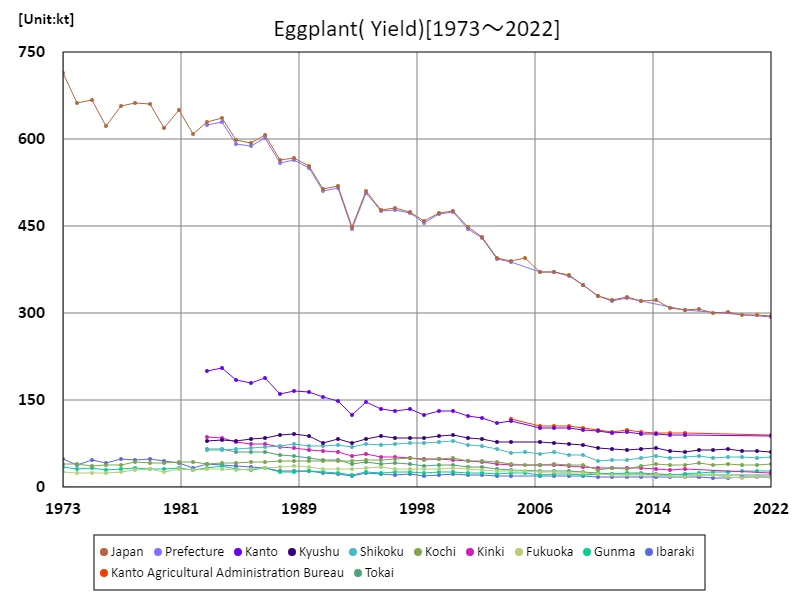

The maximum is 714kt[1973] of Japan, and the current value is about 41.3%
Eggplant harvest volume (by prefecture).
According to the latest data for 2022, Japan’s fruit vegetable harvest is at its peak, with Kochi Prefecture recording the highest total at 40.6kt. This trend reflects the fact that Kochi Prefecture has a warm climate and abundant water sources, providing ideal conditions for fruit and vegetable production. On the other hand, production volumes vary in other regions, due to differences in climatic conditions and soil conditions. Agricultural policies and technological innovations also affect regional production volumes. Additionally, changes in demand and domestic and international competition may also be affecting production volumes. In general, fruit vegetable harvest yields vary depending on the region and external factors, making it a challenge to establish a sustainable production system.
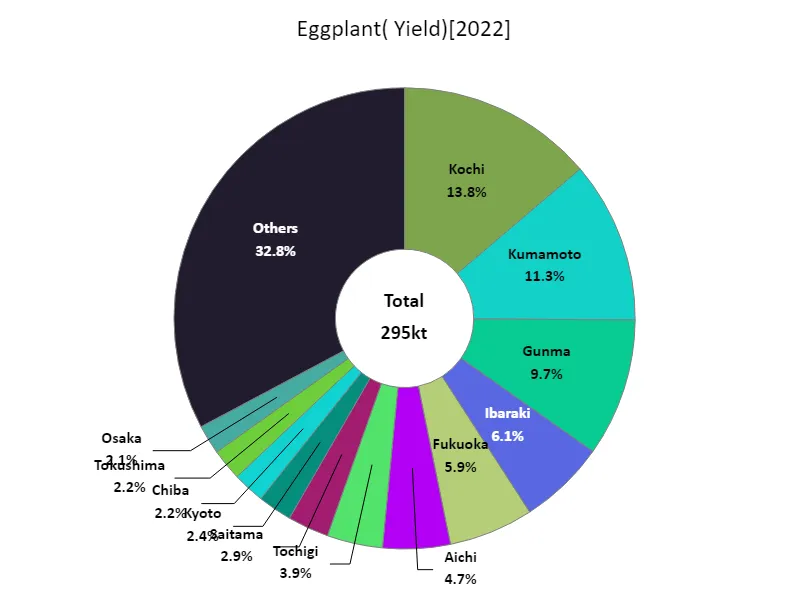

The maximum is 40.6kt of Kochi, the average is 6.27kt, and the total is 295kt
Eggplant cultivation area (main data).
The area cultivated with eggplant in Japan peaked at 25.1 kha, the national record, in 1973, and has since been on a downward trend. As of 2022, it has fallen to 31.7% of its peak. The reasons for this decline include urbanization, conversion of farmland, and the aging of the agricultural workforce. Additionally, changes in demand due to changes in the economy and consumption may also be a factor. At the same time, efforts are being made to improve the sustainability and efficiency of agriculture, and measures are being explored to curb the decline in cultivated area. These efforts could also lead to improved agricultural productivity and revitalization of local economies. In the future, the challenges will be to stabilise production area and build a sustainable agricultural system.
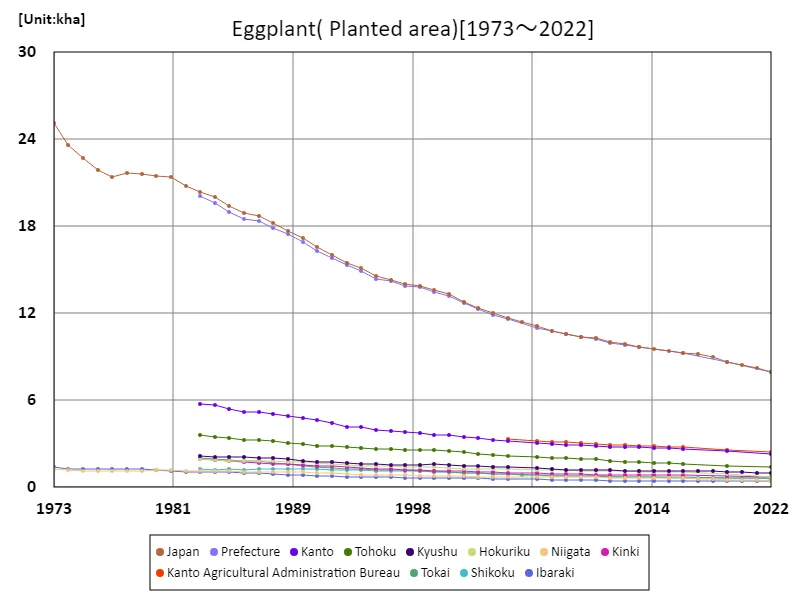

The maximum is 25.1kha[1973] of Japan, and the current value is about 31.7%
Eggplant cultivation area (by prefecture).
In 2022, Gunma Prefecture will record the highest area of fruit vegetable cultivation in Japan, at 524 hectares. This trend reflects the fact that Gunma Prefecture has abundant farmland and favorable climatic conditions, making it an ideal environment for fruit and vegetable production. On the other hand, the cultivated area varies in other regions, due to differences in soil conditions and climate from region to region. Other factors that may be affecting the area under cultivation include changes in agricultural policies, demand, and labor availability. While efforts are being made to improve productivity, including through technological innovation and the promotion of sustainable agriculture, consideration is also given to regional characteristics and the preservation of traditional agriculture. In general, regional differences and multiple factors affect the area planted to fruit vegetables, and there is a need to establish sustainable agricultural production systems.
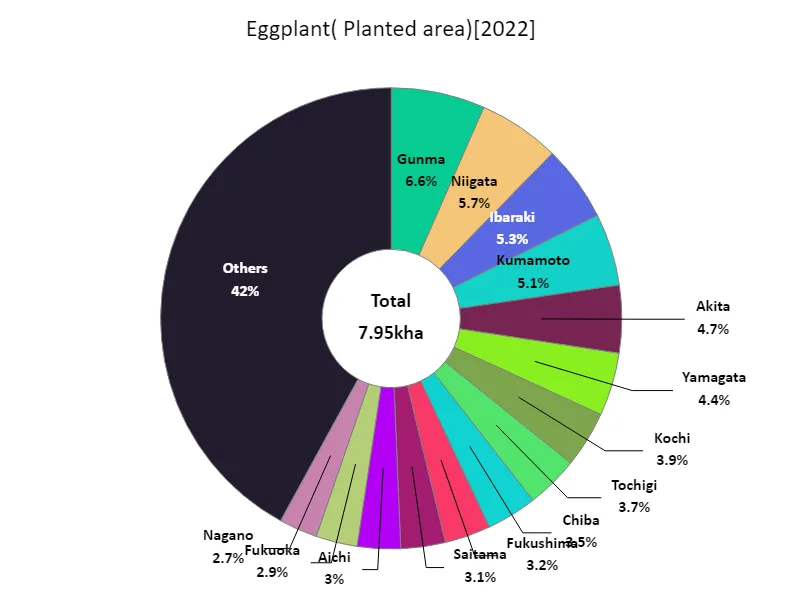

The maximum is 524ha of Gunma, the average is 169ha, and the total is 7.95kha
Eggplant shipping volume.
Japan’s total eggplant shipments in 2022 will reach 237kt, with Kochi Prefecture recording the highest volume at 38.7kt. This figure is significantly higher than the average shipment of 5.04kt, suggesting that Kochi Prefecture is a major eggplant producing area. Kochi Prefecture has a warm climate and abundant water sources, providing an ideal environment for growing eggplants, which has led to a sustained high shipping volume. On the other hand, shipping volumes vary in other regions, and differences in production volumes can be seen from region to region. Changes in agricultural policies, demand, and labor availability may also be affecting shipping volumes. Additionally, changes in domestic and international competition and import/export policies are also factors affecting shipping volumes. In general, regional differences and various other factors affect eggplant shipping volumes, and there is a need to establish a sustainable agricultural production system.
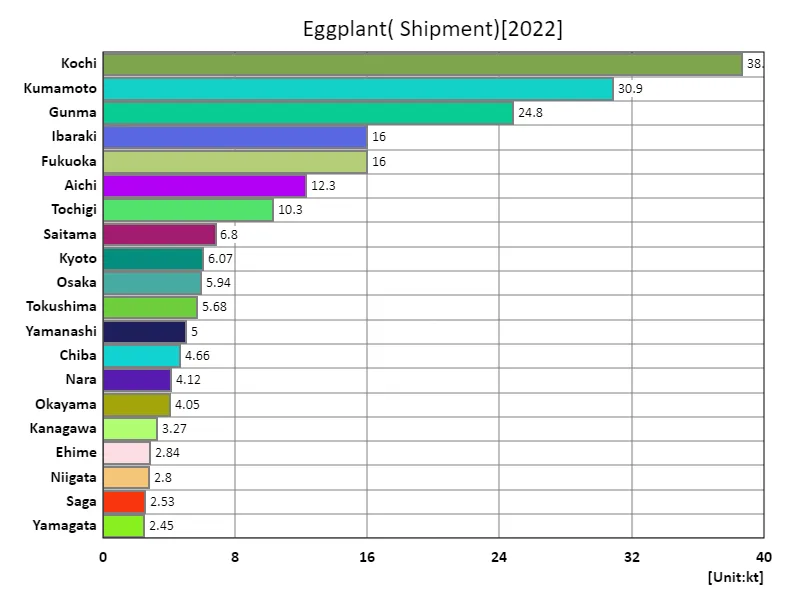

The maximum is 38.7kt of Kochi, the average is 5.04kt, and the total is 237kt
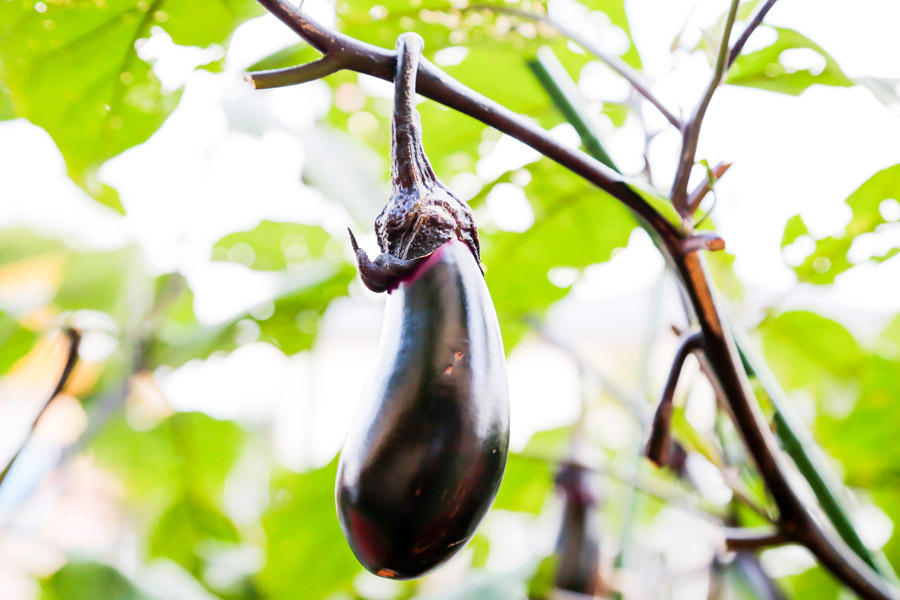


Comments